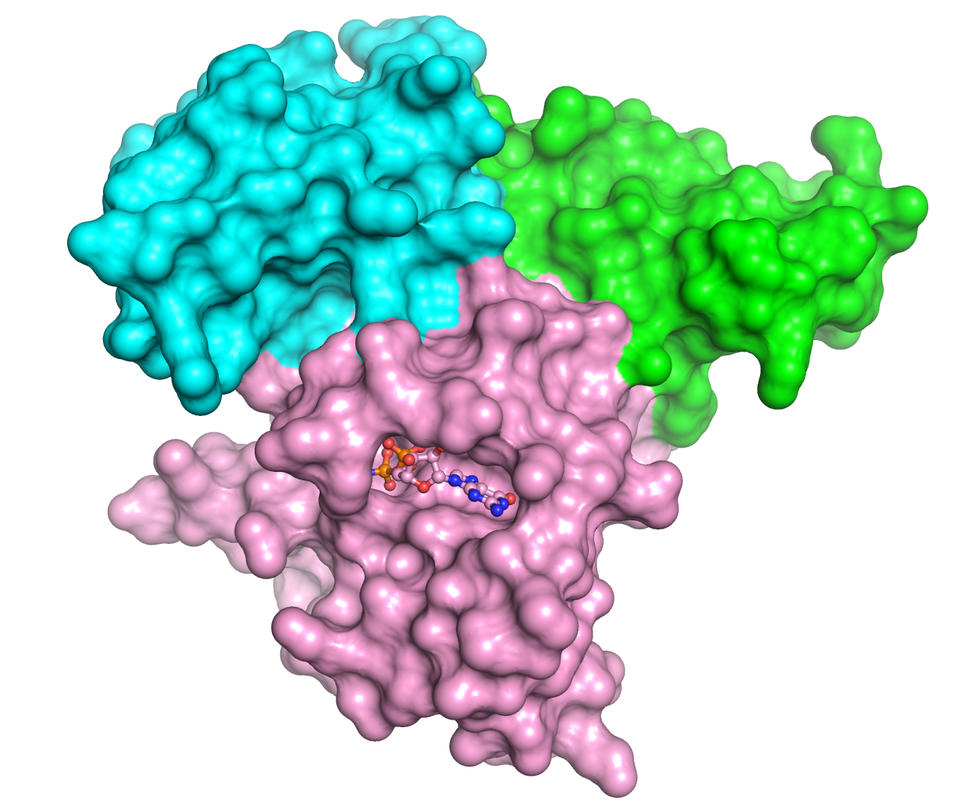RAS Initiative Structural Biology Research
The RAS Initiative Structural Biology Research Team leads the efforts on the structural characterization of RAS complexes with various effectors, regulators, and small molecules using NMR, crystallography, and cryoEM. With these studies, our researchers aspire to not only provide new structural and mechanistic insights into RAS biology but also to identify new targets for structure-based drug discovery efforts.
Progress
Our structure-function studies on oncogenic RAS mutants and RAS complexes with various effectors and regulators (GAPs and trafficking proteins) have provided new structural and functional insights into RAS biology. Structural work on RAS, RAF, and PI3K in complex with small molecules has played a significant role in multiple ongoing drug discovery projects with cCRADA (Contractor Cooperative Research and Development Agreements) partners.
The work done by our team has resulted in multiple publications which can be accessed using this PubMed link: RAS Initiative Structural Biology Lab Publications.
Projects
The primary focus of our research is to use a combination of biochemical, structural, and cell biological techniques to study the RAS signaling and enable drug development via structure-based drug design to target RAS directly or indirectly.
The RAS Initiative Structural Biology Research Team is working on structural analysis of various oncogenic KRAS mutants and KRAS complexes with various effectors and regulators to gain structural, functional, and mechanistic insights into RAS biology.
A significant effort of this team is also focused on structure-guided hit/lead development in multiple ongoing drug discovery projects internally as well as with cCRADA partners.
Tools
Elucidating dynamics and the three-dimensional structure of biomolecules at atomic resolution is critical for understanding vital biological processes, linking structure and function, and identifying new drug targets.
The RAS Initiative Structural Biology Research Team uses multiple structural biology techniques such as crystallography, cryoEM, and NMR, along with various biophysical, biochemical, and cell biology assays in collaboration with other teams within the RAS Initiative.
The structural biology team works very closely with the Protein Expression Laboratory and is well equipped with crystallization robotics and an in-house X-ray generator. The team has regular access to the Titan Krios for cryoEM data collection and synchrotron beamline (24-ID) at the Argonne National Laboratory for crystallographic data collection.
The RAS Initiative Structural Biology Research Team
Team lead and contact
Dr. Dhirendra Simanshu
dhirendra.simanshu@nih.gov
301-360-3438
Collaborators
The RAS Initiative Structural Biology Research Team collaborates with leading RAS researchers in the country to gain new structural and functional insights into RAS mutants and RAS complexes with effectors and regulators. Our team is also engaged in multiple drug discovery projects with various biotech/pharma under the Contractor Cooperative Research and Development Agreements (cCRADA) mechanism. The team is collaborating with TheRAS (BridgeBio Inc.) and Sanofi.
Our team is currently collaborating with these groups:
- Andy Aguirre, M.D., Ph.D., and William Hahn, M.D., Ph.D., Dana-Farber Cancer Institute, Broad Institute of MIT and Harvard
- Kevin Haigis Ph.D., Dana-Farber Cancer Institute, Harvard Medical School
- Channing Der, Ph.D., University of North Carolina at Chapel Hill
- Pau Castel, Ph.D., New York University Grossman School of Medicine
- Pablo Rodriguez-Viciana, Ph.D., UCL Cancer Institute, University College London
- Chris Neale, Ph.D., Los Alamos National Laboratory
Publications
The work done by our team, has resulted in multiple publications which can be accessed using this PubMed link: Publications of the RAS Initiative Structural Biology Research Team.
Some of our key publications are listed below:
- Bonsor DA, Alexander P, Snead K, et al. Structure of the shoc2–mras–PP1C complex provides insights into RAF activation and Noonan syndrome. Nature Structural & Molecular Biology. 2022;29(10):966-977. doi:10.1038/s41594-022-00841-4 [PubMed Abstract]
- Simanshu DK, Morrison DK. A structure is worth a thousand words: New insights for RAS and RAF Regulation. Cancer Discovery. 2022;12(4):899-912. doi:10.1158/2159-8290.cd-21-1494 [PubMed Abstract]
- Chao F-A, Dharmaiah S, Taylor T, et al. Insights into the cross talk between effector and allosteric lobes of KRAS from methyl conformational dynamics. Journal of the American Chemical Society. 2022;144(9):4196-4205. doi:10.1021/jacs.2c00007 [PubMed Abstract]
- Castel P, Dharmaiah S, Sale MJ, et al. Ras interaction with sin1 is dispensable for mTORC2 Assembly and activity. Proceedings of the National Academy of Sciences. 2021;118(33). doi:10.1073/pnas.2103261118 [PubMed Abstract]
- Tran TH, Chan AH, Young LC, et al. Kras interaction with RAF1 Ras-binding domain and cysteine-rich domain provides insights into ras-mediated RAF activation. Nature Communications. 2021;12(1). doi:10.1038/s41467-021-21422-x [PubMed Abstract]
- Yan W, Markegard E, Dharmaiah S, et al. Structural insights into the Spred1-neurofibromin-kras complex and disruption of spred1-neurofibromin interaction by oncogenic EGFR. Cell Reports. 2020;32(3):107909. doi:10.1016/j.celrep.2020.107909 [PubMed Abstract]
- Rabara D, Tran TH, Dharmaiah S, et al. Kras G13D sensitivity to neurofibromin-mediated GTP hydrolysis. Proceedings of the National Academy of Sciences. 2019;116(44):22122-22131. doi:10.1073/pnas.1908353116 [PubMed Abstract]
- Simanshu DK, Nissley DV, McCormick F. Ras proteins and their regulators in human disease. Cell. 2017;170(1):17-33. doi:10.1016/j.cell.2017.06.009 [PubMed Abstract]
- Dharmaiah S, Bindu L, Tran TH, et al. Structural basis of recognition of farnesylated and methylated kras4b by pdeδ. Proceedings of the National Academy of Sciences. 2016;113(44). doi:10.1073/pnas.1615316113 [PubMed Abstract]

